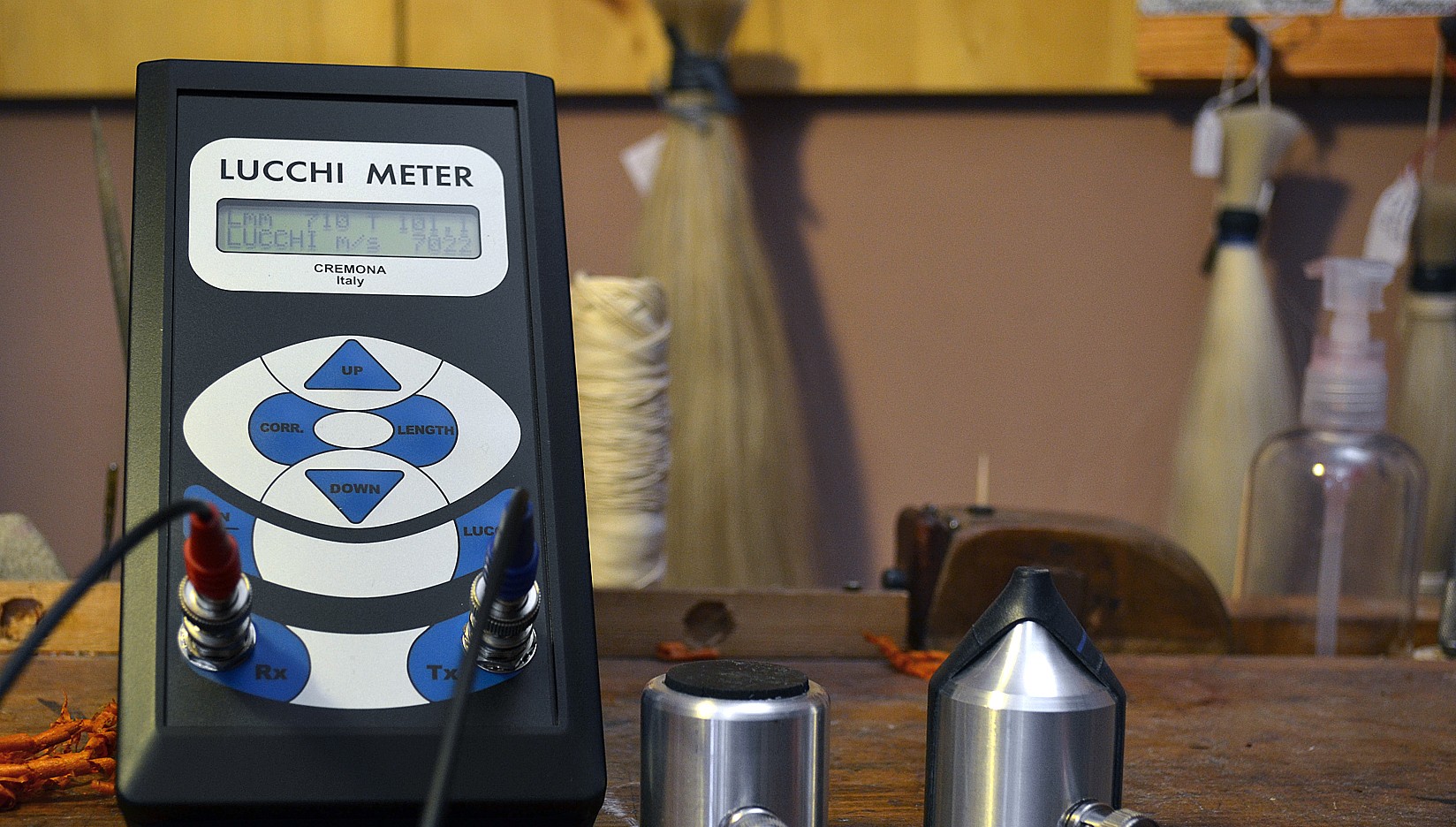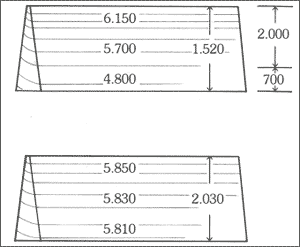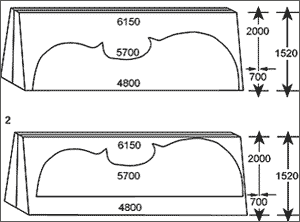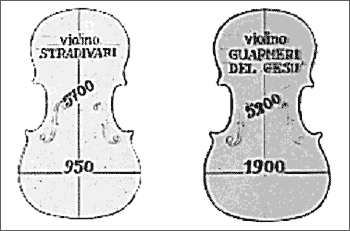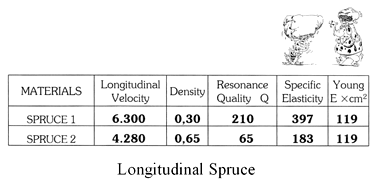The luthiers had very few parameters to judge the material to be selected and much was left to their own personal touch. (Photo 20) You can see a luthier trying to determine the force of the harmonic plate.
 |
|
20) Tests of resistance to torsion and flexion
|
|---|
The aid of ultrasonics is very useful in the lutherie world and determines, surely and reliably, which is the best material to be used. (Figure 21)
|
|
With a quick and simple check, the Lucchi Minipalm Meter can determine, in a sure and trustworthy way, all selection data among the woods to be worked with. (Photo 22)
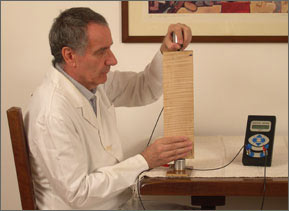 |
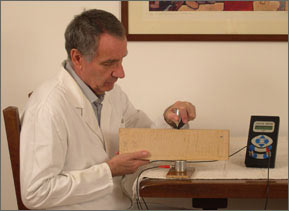 |
|
22) Maestro Lucchi measures a table
|
|---|
The use of the wood can be optimally chosen because the quality can be excellent in one portion but very poor in the other. (Figure 23)
|
|
By analyzing the ancient instruments and bows with the Lucchi Minipalm Meter, we can understand the materials originally used. Ancient bows tend to become weaker with long use and lose many of their original qualities. However, instruments suffer a loss of quality only in the soundpost, bassbar, bridge and strings, while the rest of the instrument retains its original qualities. By measuring it, (Photo 24) we can understand thoroughly how the instrument was conceived by its original maker and, consequently, we can make copies that only slightly differ from the original one.
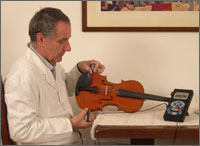 |
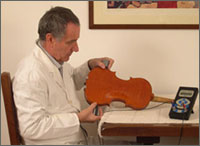 |
|
24) Measuring a violin with the Lucchi Minipalm Meter
|
|---|
We personally executed some tests and our studies led to interesting results. Master Lucchi had the opportunity to measure these two instruments (Figure 25)
|
|
In spite of the higher longitudinal velocity of the first, the second instrument was determined to be more powerful when submitted to a listening test.
By measuring the transversal velocity the secret was revealed. The second instrument was extremely high and emitted a large sound volume because the sum of the two velocities measured was higher.
This has enabled us to understand how important the radial velocity could be in the lutherie field. With further trials, we have discovered why the one-piece harmonic table exhibits less velocity than the two-piece harmonic table. On the one-piece plate shown in the picture (Figure 26) the left side of the fiber is very long and well used, but the right side is obviously too short as a result of the working process.
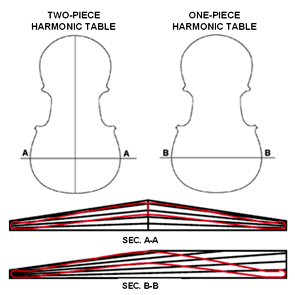 |
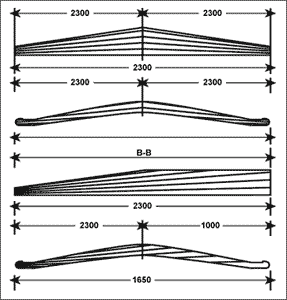 |
|
26) Distribution of the medullar rays on one-piece and two-piece harmonic plates
|
|---|
The shortening of the medullar rays greatly decreases the sound velocity and, consequently, reduces the vibrational capabilities of the instrument. By using a two-piece harmonic plate, we can optimize the cut of the wood and reach the maximum transmission level.
Carrying out a continuous check during every working phase, (Photo 27) we will be able to optimise not only the choice of the material but also avoid incorrect processes, thus improving the obtained results.
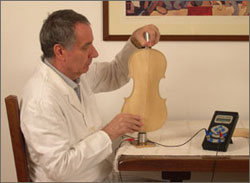 |
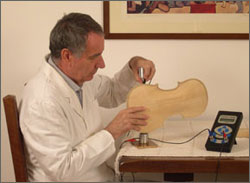 |
|
27) Check of working phases
|
|---|
By knowing the parameters of the sound velocity, it is possible to receive indispensible information for both bow makers and instrument makers. With a simple math equation, velocity divided by density (v/d), we arrive at what, in mechanical engineering, is the so called “coefficient of resonance”. This parameter, known in lutherie as “quality factor”, permits us to determine, between two pieces of wood owning the same velocity, which one has the better vibration. The lightness of wood is, in fact, of basic importance for the construction of musical instruments but, if the weight is not related to velocity, we risk making a light violin that doesn’t play or sound well.
As you can see in the table below, (Figure 28) these two spruce trunks present a very different density, apart from the outstanding differences in the velocity values. The extremely high density of the second sample, when related to the poor longitudinal sound velocity, causes a very low coefficient of resonance. In other words, this makes the second example of no use for a skilled maker.
|
|
